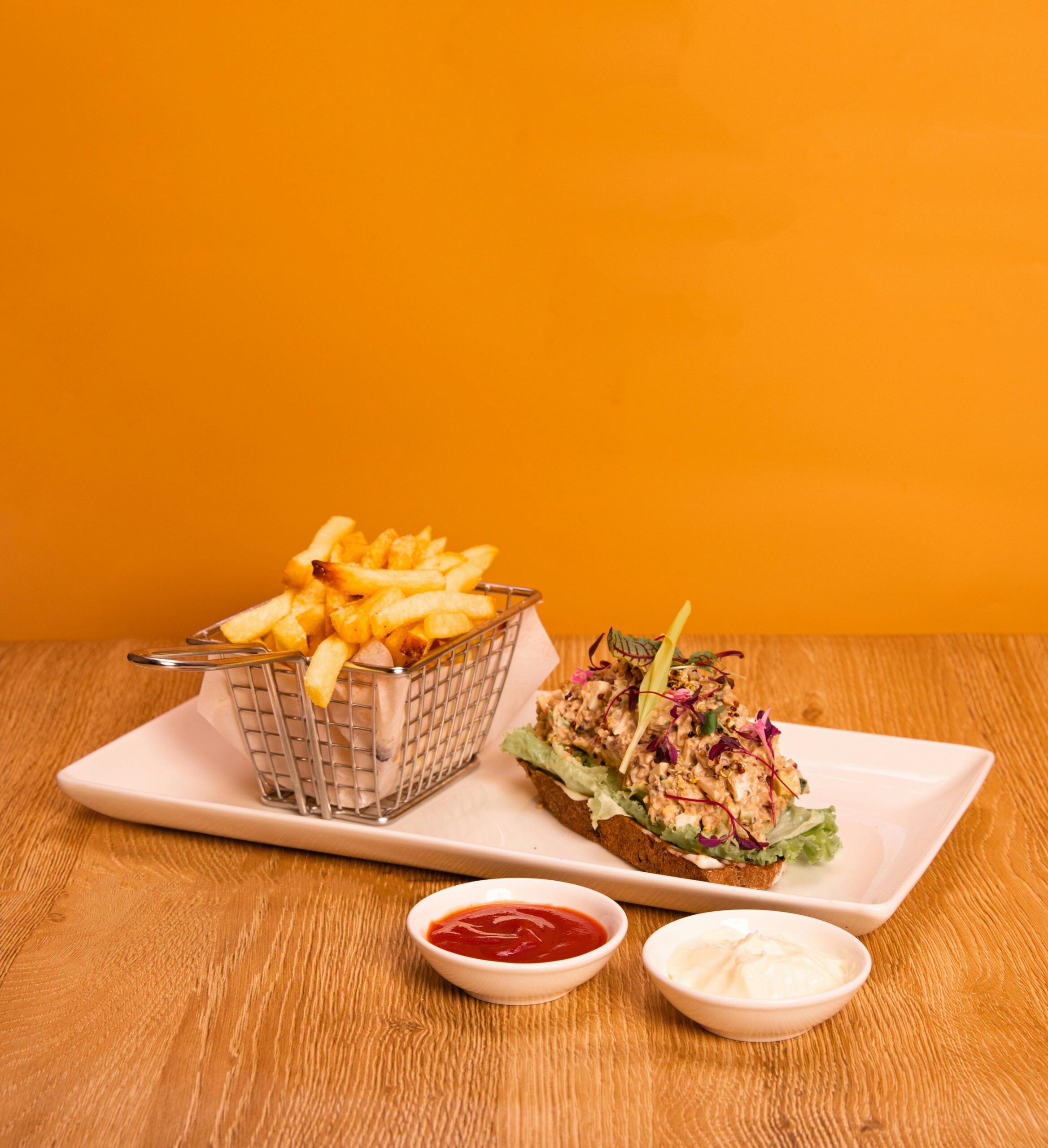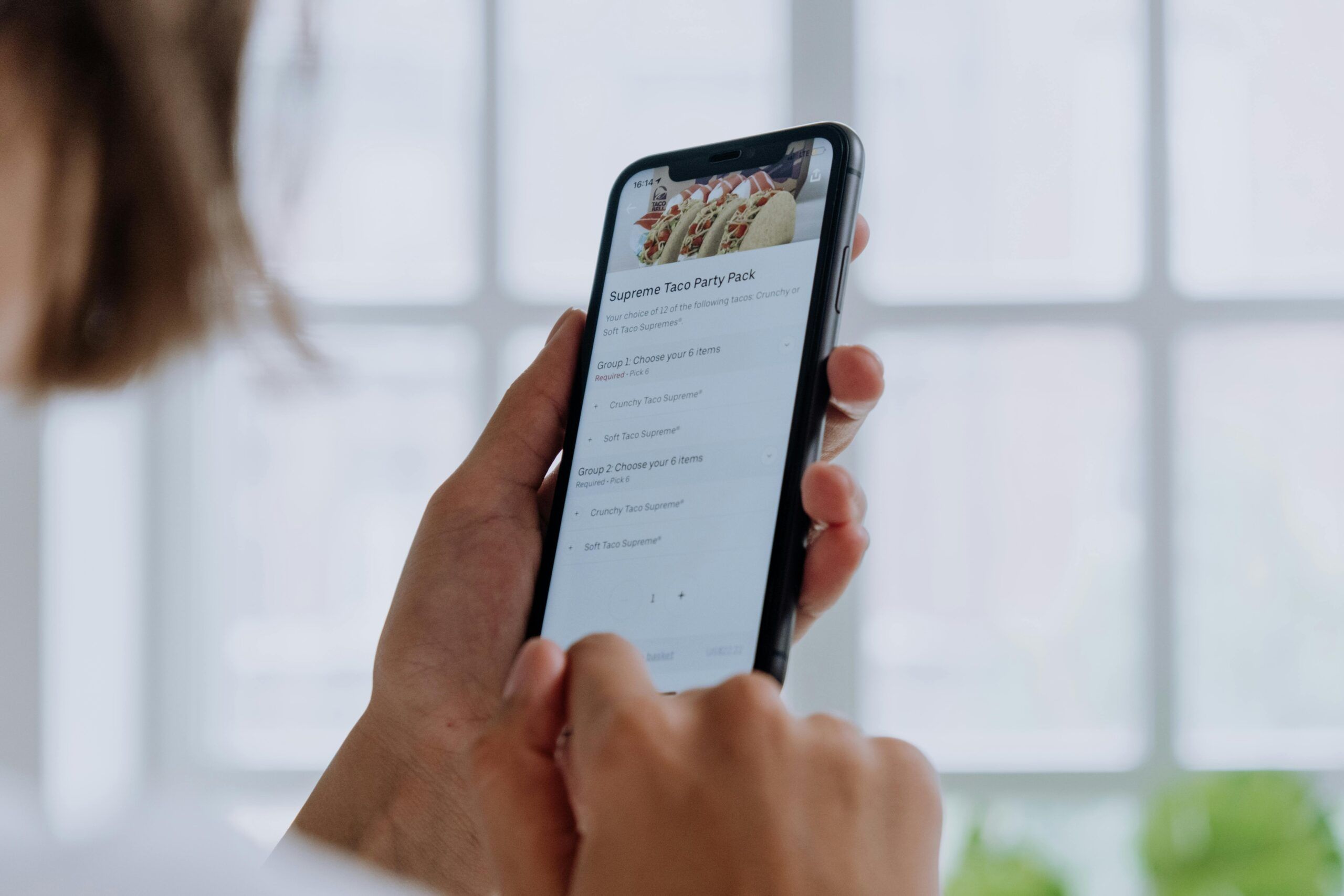- When Should You Transit To A Menu Management System?
- Key Features To Look For In A Menu Management System
- Evaluating Compatibility With Existing Systems
- Implementing Your Menu Management System
- How To Create A Digital Menu In 8 Steps Using Orders.co?
- Why Choose Orders.co For Your Restaurant’s Success?
- FAQ
Choosing the right restaurant menu management system is more than just a tech upgrade—it’s a key to your restaurant’s growth.
Imagine a system that simplifies every aspect of your dining service, from the menu your customers browse to the efficiency of your kitchen operations.
With a top-notch system like Orders.co, you’re not just improving operations; you’re enhancing the entire dining experience.
Here’s the scoop:
- Boost Efficiency: Automatically update menus, streamline orders, and manage your inventory with ease.
- Higher Customer Satisfaction: Keep your offerings fresh and exciting with minimal effort.
- Increase Profitability: Smartly price your dishes and cut down on waste.
Excited to learn how the right menu management system can revolutionize your restaurant?
Let’s dive in!
Key Takeaways
- Implement a menu management system when facing frequent menu changes, expansion, or operational inefficiencies.
- Key features to look for include real-time updates, integration capabilities, user-friendliness, customization options, robust analytics, and reliable customer support.
- Ensure compatibility with existing POS and third-party apps to streamline operations across all platforms and locations.
- Proper staff training and effective data migration are crucial for a smooth transition to a new menu management system.
- Regular updates and strategic promotions are essential to keep the menu aligned with customer preferences and market trends.
- Choosing the right menu management system can significantly enhance operational efficiency, customer satisfaction, and overall profitability.
When Should You Transit To A Menu Management System?

Deciding when to adopt a menu management system is pivotal for any restaurant aiming to streamline operations and increase profitability.
If you’re noticing any of the following signs, it might be time to consider implementing such a system:
- Frequent Menu Changes: If your restaurant often updates its menu due to seasonal ingredients or changing customer preferences, a menu management system can make these adjustments quicker and more uniformly across all platforms.
- Expansion Plans: As your business grows to encompass multiple locations, the complexity of maintaining consistent menu offerings and pricing increases. A menu management system ensures uniformity and simplifies updates across all sites.
- Inefficiencies in Order Processing: If errors are creeping into your order process, perhaps due to outdated pricing or menu items that aren’t available, a menu management system can provide real-time updates and reduce mistakes.
- Customer Feedback: If you receive feedback about menu discrepancies or outdated information, a management system can help keep your offerings current and correctly advertised, improving customer satisfaction.
- Marketing Initiatives: If your marketing efforts are increasing and you need to ensure that promotions or new items are quickly reflected in your menu, this technology can integrate these changes seamlessly.
Choosing the right time to integrate a menu management system can dramatically improve your operational efficiency and customer experience.
Also read:
- How to Optimize Your Restaurant’s Online Menu
- 7 Ways to Write Mouth-Watering Menu Descriptions
- 9 Restaurant Menu Design Tips That Will Help You Boost Profits
- 5 Must-Have Tools to Simplify Your Restaurant Operations
Key Features To Look For In A Menu Management System

When selecting a menu management system, it’s essential to identify the features that will best better your restaurant’s operational efficiency and customer service.
Here are some critical features to consider:
| Feature | Description |
| Real-Time Updates | Allows updates across all digital platforms and locations instantly, crucial for accuracy and consistency with multiple outlets. |
| Integration Capabilities | Integrates seamlessly with existing POS and operational software, minimizing disruptions and maintaining smooth workflow. |
| User-Friendly Interface | Easy for staff to use without extensive training, ensuring quick adoption and minimizing errors during transition. |
| Customization Options | Allows customization of menus to reflect the restaurant’s brand and style, including layout adjustments, images, and unique descriptions. |
| Analytics and Reporting | Provides insights into menu performance, customer preferences, and sales trends, aiding data-driven decisions to increase profitability. |
| Customer Support | Vital for handling initial setup challenges and ongoing system navigation, ensuring reliable support is always available. |
Incorporating these features into your menu management system can significantly improve how you manage your menu’s lifecycle, from creation and modification to analysis and optimization.
Evaluating Compatibility With Existing Systems

Here’s what to look for:
- POS Integration: The system should sync with your existing point-of-sale system to automatically update changes across all service points.
- Third-Party Compatibility: Make sure it works well with any third-party apps you use for ordering and delivery.
- Data Synchronization: It’s important that the system can keep your menu consistent across all platforms, whether customers order online or in person.
- Scalability: As your business grows, your system should be able to handle more orders, items, and even new locations without a hitch.
Picking a system that integrates well will help you manage your restaurant more efficiently now and as you expand.
Your Inbox, Your Rules!
Tailor your newsletter with the topics you're most interested in.
Implementing Your Menu Management System
Once you’ve selected a menu management system, the next step is implementation, which is critical to its success in your operations. Here’s how to ensure a smooth transition:
- Staff Training: Proper training is essential. Ensure your staff understands how to use the system effectively, from updating menu items to utilizing analytics.
- Data Migration: Safely transfer all existing menu data to the new system. This might include detailed descriptions, prices, and images.
- Integration Testing: Test the integration with your POS system and any third-party services to ensure that all components communicate well without errors.
- Feedback Loop: After going live, keep a feedback loop open with your team to address any challenges or suggestions they might have. This will help fine-tune the system for better performance.
How To Create A Digital Menu In 8 Steps Using Orders.co?
Creating an online menu with Orders.co is an intuitive and streamlined process designed to help restaurant owners quickly adapt to digital demands while maintaining their unique brand identity.
Here’s a detailed step-by-step guide:
- Sign Up and Initial Setup
Begin by signing up for Orders.co. A dedicated sales representative will guide you through each step of the setup process or handle it for you. During this phase, you’ll provide essential information about your restaurant, such as its name, location, and operating hours. With the help of your representative, you can have your basic profile ready in under a minute.
- Designing Your Menu
Navigate to the menu management section within the dashboard. Most restaurants choose to import their existing menu from an active delivery app or website. Once imported, you can make minor changes to adapt or update your offerings as needed. This approach saves time and ensures consistency with your current menu layout, providing a foundation that is already familiar to your customers and easy to navigate.
- Adding Menu Items
Add items to each category by entering details like the dish name, a compelling description, price, and an appealing image. Orders.co’s AI-enhanced description creation feature can help generate enticing item descriptions that capture the essence and appeal of your dishes, improving customer engagement.
- Customization and Branding
Leverage Orders.co’s customizable templates to design your menu. You can adjust fonts, colors, and the overall layout to align with your restaurant’s branding. This customization extends to creating a custom website in less than 60 seconds, ensuring your online presence is both professional and brand-consistent.
- Integration with POS Systems
Orders.co supports integration with over 30 POS systems, making it easy to synchronize your online orders with your in-house operations. This integration ensures that all orders, whether placed online or offline, flow seamlessly into your kitchen, minimizing errors and speeding up service.
- Preview, Test, and Adjust
Before publishing your menu online, use the preview feature to see how it will appear to customers. Test all functionalities, such as adding items to the cart and completing the checkout process, to ensure a smooth customer experience. Make any necessary adjustments based on this testing to optimize usability and appeal.
- Publish and Go Live
Once you’re satisfied with your menu and website, go live. Your menu will instantly be accessible to customers through your Orders.co webpage or seamlessly integrated into your existing website if you have one.
- Ongoing Management and Updates
Orders.co facilitates easy, real-time updates to your menu. Whether you’re adding new items, adjusting prices, or featuring seasonal specials, you can make changes instantly, keeping your menu fresh and up-to-date on all platforms at once. This flexibility is crucial for adapting to customer preferences and operational needs.
The platform’s comprehensive tools and integrations provide a robust solution for thriving in today’s competitive food service industry.
Why Choose Orders.co For Your Restaurant’s Success?
Why opt for Orders.co for your restaurant’s needs? Beyond just menu management, Orders.co provides a holistic platform designed to optimize every aspect of your restaurant’s operations.
This all-in-one system integrates advanced analytics for insightful business reporting, currently enabling thousands of restaurants to make data-driven decisions that contribute to profitability and efficiency.
QR Menu Maker
Boost customer convenience with touch-free, digital menus accessible via our standalone QR menu maker app, which is free to use. Create, update, and customize your menus effortlessly.
This feature caters to diners who want to see the dish description and look in detail, and it speeds up the ordering process by reducing wait times and improving the overall dining experience. Generate, share, and print QR codes easily for quick customer access directly through the app.
Online Food Ordering System
Streamline your operations by consolidating orders from all channels—be it your website or third-party platforms—into one unified dashboard. This online food ordering system integration reduces the risk of errors, speeds up order processing, and ensures a smoother operation flow from kitchen to table, improving overall service speed and quality.
Guest Feedback Monitoring
Efficiently track and address online reviews. Orders.co’s guest feedback monitoring feature allows you to uphold a strong online presence by encouraging positive feedback and addressing any criticisms professionally. This is vital for preserving your restaurant’s reputation and building trust with customers.
Restaurant Loyalty Program
Setting up a simple but effective loyalty reward program with Orders.co is a breeze. Keep your regulars coming back by rewarding them with points and discounts. The system automates the loyalty program on mobile devices, simplifying the management of rewards and driving repeat customer engagement.
Dispute Management
Effectively manage disputes with third-party delivery services using Orders.co’s AI-enhanced dispute management assistant. This feature assists you in ensuring that charges from delivery partners are accurate, helping you avoid overpayments. Additionally, it is designed to help you win up to 90% of chargeback cases, protecting your restaurant’s revenue and maintaining high customer satisfaction by resolving delivery-related issues swiftly and effectively.
Local Business Optimization
Ensure your restaurant is a top choice in local search results. Orders.co provides tools for local business optimization, enhancing your online visibility so more potential customers can find you. This includes managing your Google My Business profile and ensuring your restaurant is listed in key local directories.
Ready to take your restaurant to the next level?
Schedule a free demo with Orders.co today and discover how our comprehensive system can transform your business.
FAQ

- What are the initial costs of implementing a menu management system for restaurants?
Expect initial costs to include software licensing or purchase fees, possible hardware if not compatible with existing devices, and training costs for staff. Many providers offer scalable pricing based on features, so costs can be tailored to your restaurant’s size and needs.
- How long does it take to fully integrate a menu management system into a restaurant’s existing operations?
Full integration typically ranges from a few days to several weeks, depending on the complexity of your operations and the comprehensiveness of the system. Planning for a gradual rollout can help minimize disruptions to your service.
- Can a menu management system for restaurants support menu changes for seasonal or special event offerings?
Yes, most systems allow for easy updates and changes, enabling you to add or remove items for seasonal menus or special events quickly. This feature ensures that you can keep your offerings fresh and aligned with customer demands or inventory changes.
- What kind of technical support is available with a menu management system for restaurants?
Most providers offer a range of support options, including 24/7 phone support, email help desks, and online chat features. For more complex issues, some may offer direct support from a technician. It’s essential to choose a system with reliable support that matches your operational hours.
- How does a menu management system handle multiple restaurant locations?
Systems designed for multiple locations typically offer centralized control with the ability to make location-specific adjustments. This means you can ensure uniformity where needed while tailoring certain aspects to individual location needs.
- What security measures are in place to protect customer data within a menu management system for restaurants?
Look for systems that comply with PCI DSS standards for payment processing and utilize encryption for data transmission. It’s also wise to inquire about the system’s backup and disaster recovery processes to protect against data loss.
- How can restaurant owners measure the ROI of a menu management system for restaurants?
Key performance indicators might include reduced time for menu updates, decreased order errors, increased sales through up-selling features, and customer feedback on menu variety and accuracy. Tracking these metrics before and after implementation can provide clear insights into ROI.
- Can the system integrate with other restaurant management tools?
Ensure the menu management system for restaurants can integrate with your existing POS, inventory management, and CRM systems. Integration capabilities can significantly reduce redundancy and streamline operations, from ordering to customer relationship management.










